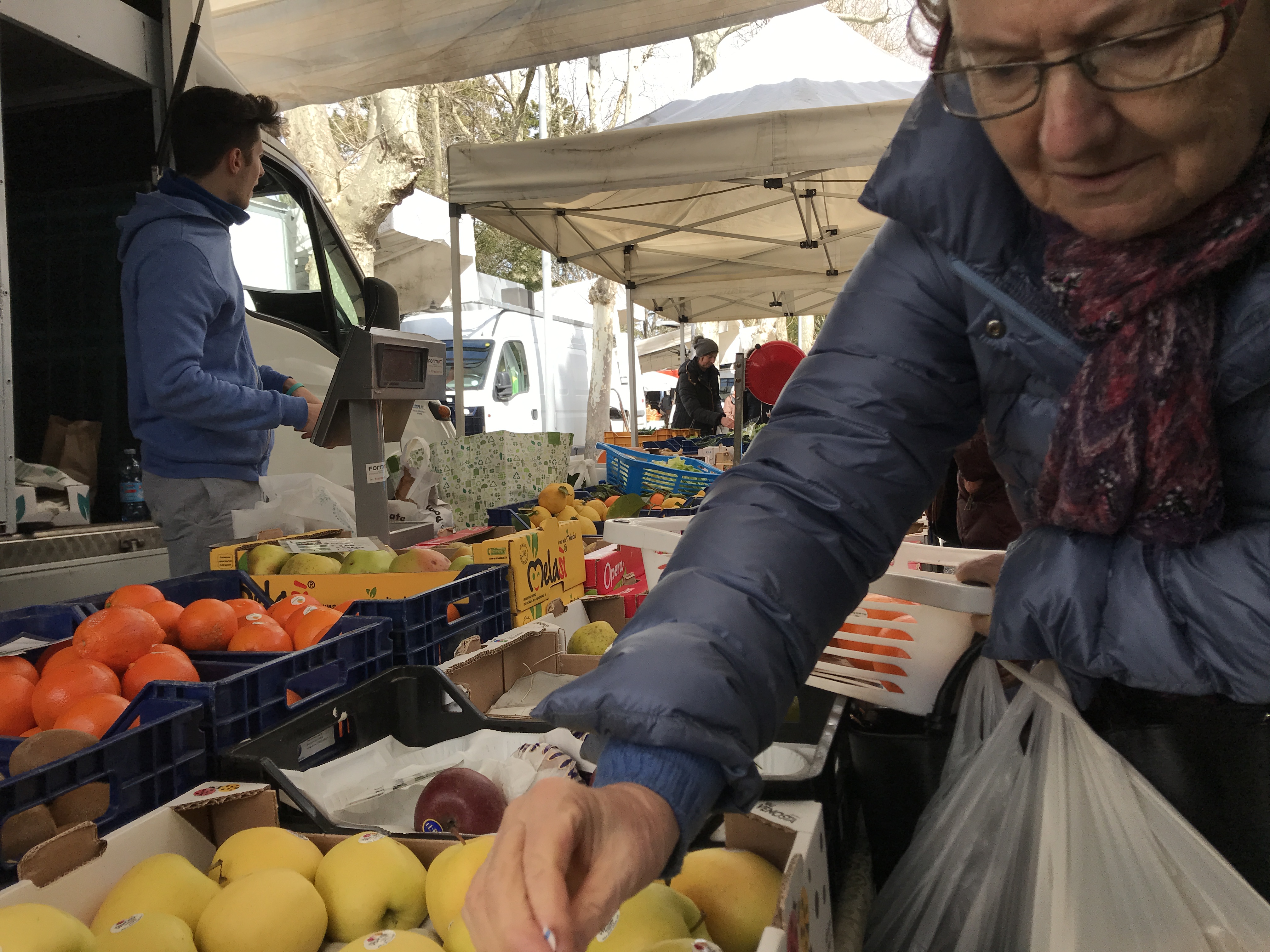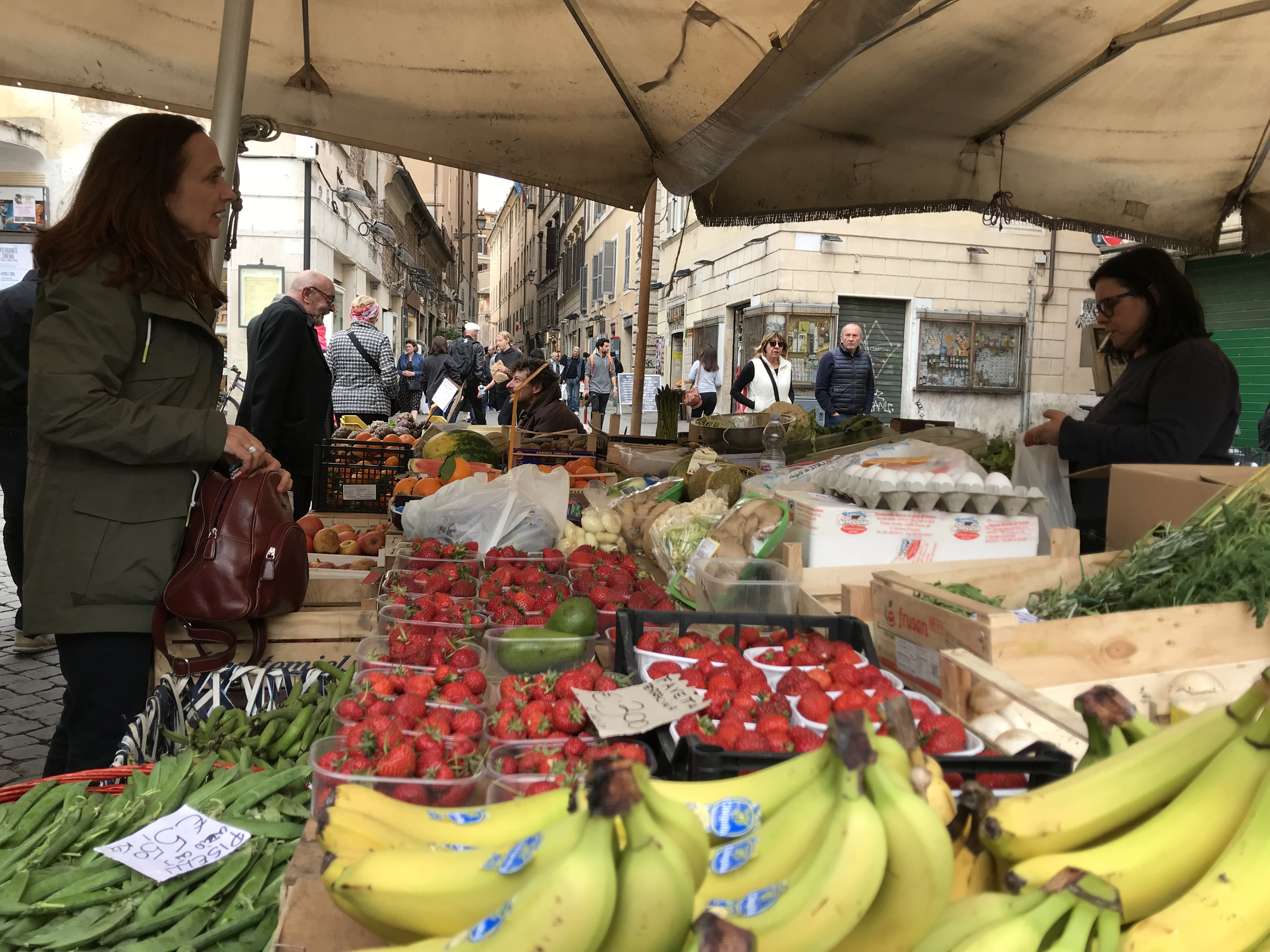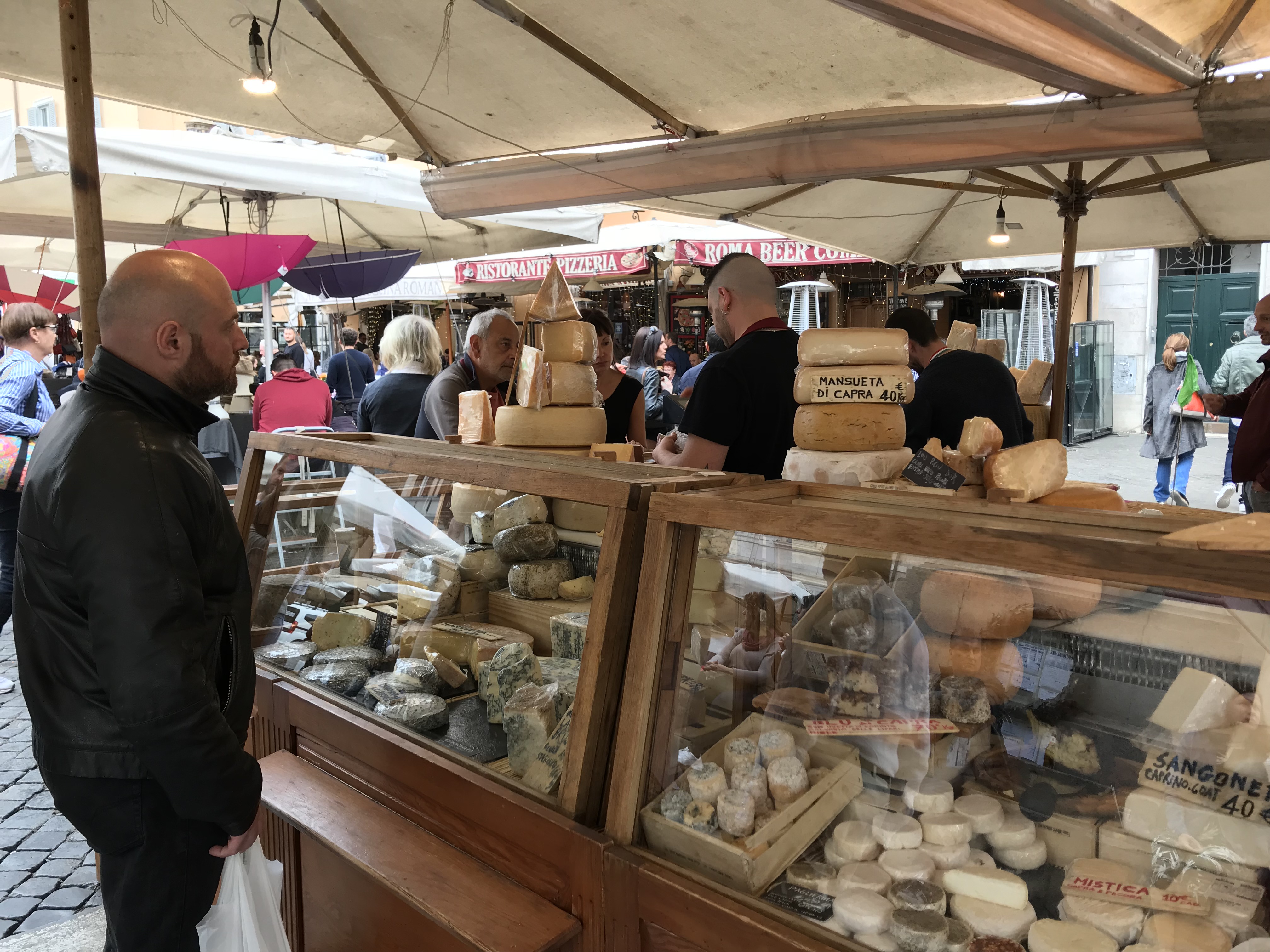
By Ryan Bedford, senior in mechanical engineering
Some may think that Iowa and Italy would be two completely different worlds, when in reality there are a lot of similarities. We each have our traditions that define who we are as a city, state and nation, but there will always be smaller things one may not notice that bring us closer together. In Iowa everyone has heard about the Downtown Farmers’ Market in Des Moines on Saturdays. You may even be lucky enough to have one in your town as well. In villages and large towns in Italy, they have their farmers markets as well, only they just leave out the farmer bit.

The markets in Italy are a big part of the lives of the people in this country. The markets show the history of that region through what is offered. If you are in a coastal city, there will be a magnitude of options for buying fish. If you are more inland, then you may find more options when it comes to fruits, vegetables, and olive oils. The markets also sell fresh cooked food. One of the foods that can be bought there is the cresce. In Urbino, the cresce is something that is native to this area and a part of their history. It is a tortilla with ham and cheese folded in half, and it is delicious. If the mensa (school cafeteria) in town ever has bad options, you can almost always find a cresce in one of the lines.
Small towns in Italy have markets usually only once a week per town, so Urbino has it on Saturdays while the next small town will have it on Sunday. Often times the sellers at the markets travel town to town all week as their full time jobs. Locals will flock to the markets and stock up on all the fresh Italian produce, meats, cheeses, and any clothes they may need for the coming week. If you travel to larger towns such as Rome, they have markets open six or even seven days a week. Whether you are in a small or large city, the market is always buzzing. In Urbino the market is held on Viale Bruno Buozzi, over the wall from the Fortezza di Albornoz. There are three rows of stands that go the length of the road. A majority of the sellers come in large trucks that have fold down sides that allow them to have a covered area to sell their products.




The atmosphere of the market is similar to the markets that we have back in Iowa. Neighbors and friends greet each other and use the market as a social event to catch up on what they may have missed in the last week. People are constantly sifting through the endless piles of clothes and food to find the perfect item, it can be a bit chaotic at times. When dealing with the vendors, negotiations can be made and are expected at stands. When a student on this trip tried to buy a bag and asked for the price, one of the workers shouted out 35, and at the same time another worker yelled out 30. That was the first week we went to the market and learned a very valuable lesson that negotiation is king at the market.
When in Urbino or any other town in Italy, it is a must to go and hang out at the market. Doing this allows you to interact with the locals. You can get a feel for how their culture is, pick up some new words, submerse yourself into their laid back culture, and maybe even make a new friend.
Ryan Bedford was a senior in mechanical engineering during his semester in Urbino. He has since graduated from Iowa State University.
This post is one in a series of blog posts written by Iowa State University students who studied abroad in Urbino, Italy, in spring 2018 with Deni Chamberlin, Greenlee School associate professor. The program focuses on mobile image making, Italian language, Renaissance art history and literature and the history of food and culture. The Greenlee School of Journalism and Communication will offer the program in collaboration with LAS Study Abroad in spring 2020.